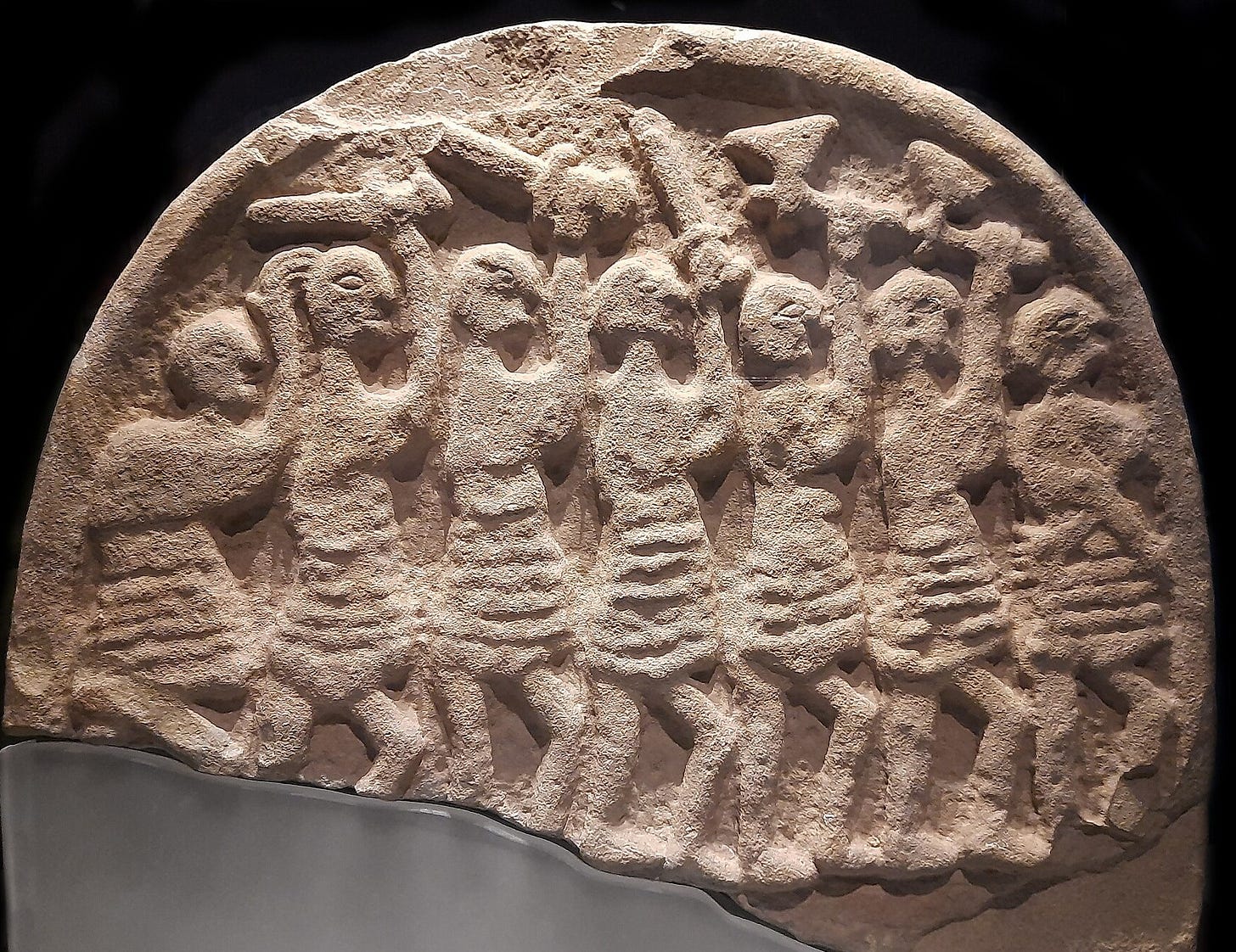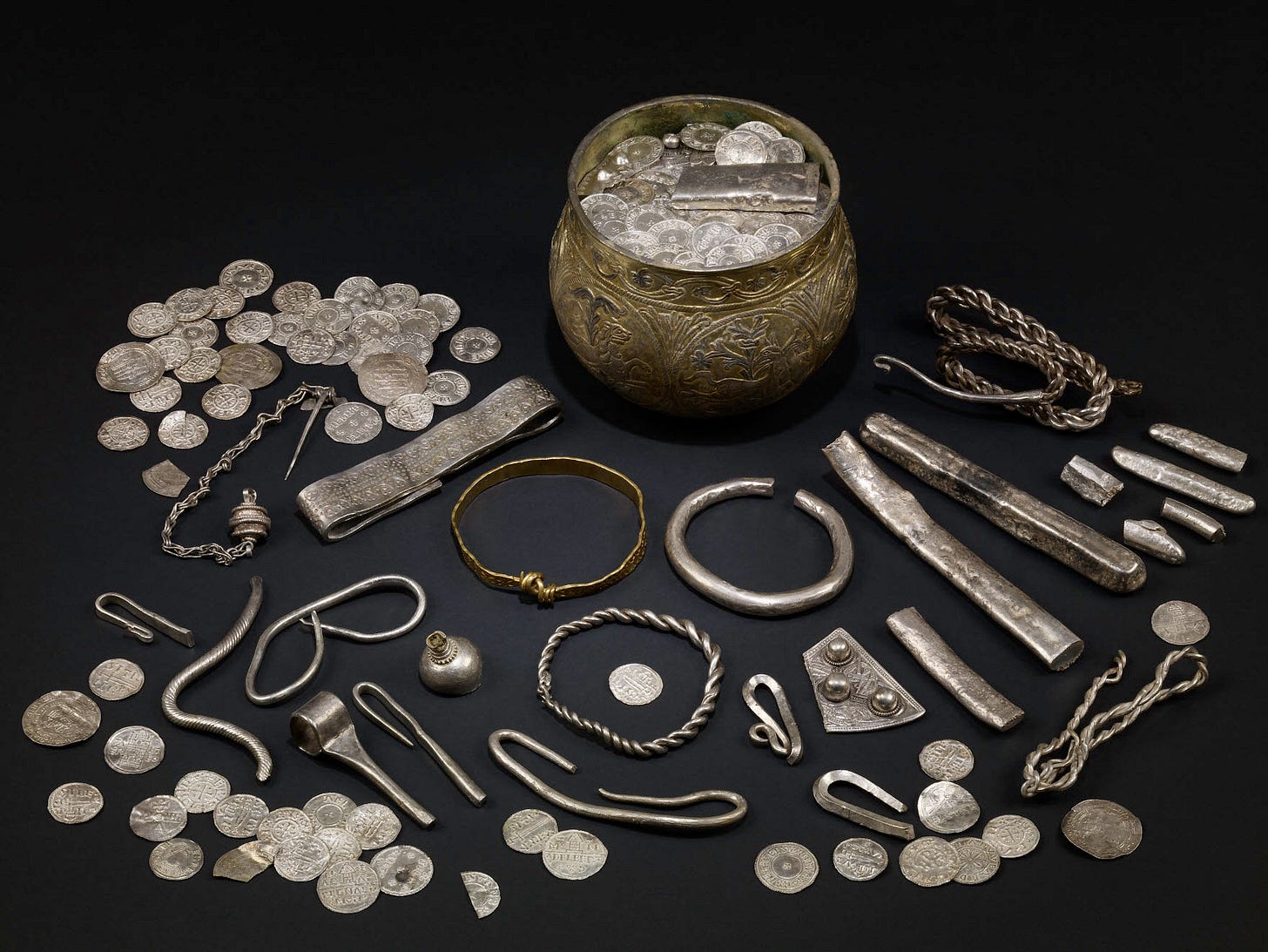“Miserable devastation of heathen men wiped out god’s church through pillage and slaughter”, says the Anglo-Saxon Chronicle about the doom suffered by the famous cloister founded by the Irish monk Aidan. No matter how disputed the onset of the Viking age might be, the 793 attack on Lindisfarne, home of magnificent gospels, will forever remain a milestone in Viking history.
Starting out as opportunistic raiders searching for riches and ways to gain prestige, political and social capital in a world of petty kingdoms and chieftaincies, the Northmen soon realize there was much more to be gained in the British Isles than fancy reliquaries. Land. Lots of land and all the perks that come with it. Paying them off has no long lasting influence; they keep coming back with a vengeance.
The highlight of the 9th century campaign that came to be known as the Great Heathen Army, the conquest army of Ragnar Lodhbrok’s sons, is the establishment of the Danelaw, a hefty territory under Danish rule (the term Danish might be a bit confusing, as the chronicles don’t give a clear ethnic origin but rather focus on how pagan they all were). In 866, York is captured. Edmund of East Anglia perishes in 869. In Mercia, they drive off king Burgred in 874 and install a puppet king. Alas, it is only Wessex that stands a chance against the tireless marauders. Alfred the Great defeats Guthrum at Edington in 878 at last, and they seal a treaty that not only will divide the lands, but also establish some ground rules. One of them regards the payment of wergeld: how much coin you had to chip in if you whacked someone. That would be 8 half-marks of pure gold or 200 shillings for Danish freedmen (interestingly, the Old Norse term is used in the treaty, “liesengum”) on peasants on leased land. Equal terms for the other side to make social orders comparable, yet populations are to be kept separate. Unless they want to trade. You can always make exceptions if they’re lucrative.
The Norse leadership in the Danelaw thus imposes its legal and social structure on its Old English-speaking population. The best indicator for that is language. The term “law” itself is not Old English. It is borrowed from the Old Norse “lǫg” (plural - laws), meaning that which is laid down, from the verb “leggja”. The English word was “ǽ”, meaning both law and marriage. Other legal terms include outlaw from “útlagi” (the worst you could be in Norse society), earl from “jarl” (the leading aristocrats in Old English were “ealdormen”), or thrall, serf (from “þræll”). Next time you use the beautiful word enthralled you’d better think about your state of enslavement.
The list of place names of Norse origins would necessitate two scrolls. To name just a few: Crosby, Selby, Grimsby, Kirkby, Whitby, Derby, anything with -by at the end because it indicates a settlement (Old Norse “byggja” = to inhabit, live). In contemporary Swedish, it still means village, but in Norwegian, it means town - bit of an understatement to call Oslo a “by” nowadays, but if you live in London or Istanbul, it makes sense. Then generally everything ending in -thorpe like Trusthorpe, Woodthorpe, Mablethorpe, “þorp” being a hamlet or larger settlement, also secondary settlement. A common Germanic origin may be suspected for some of them, though (compare Dorf in German). There are plenty of other examples. The ending -thwaite (from þveit - a clearing) gave Brackenthwaite or Bassenthwaite. “Holmr” in Old Norse is an islet, thus Holmfirth or Lealholm. The countless place names ending in -ford indicate a water crossing, e.g. Bradford, Stafford, Chelmsford, Watford, Ilford. Hope I didn’t accidentally make up some of these. The ending -wick can also signal Viking presence if it means bay, e.g. Winwick, Beswick, Ardwick. Wait, isn’t that the word origin of Viking itself? People from the wicks? Perhaps, since the term designates an activity often at sea (“fara í víking”), not a broad group of people like we’ve been using it for two centuries. However, “wick” or “wich” or “wyke” is also Old English, meaning settlement. See Nantwich, Hammerwich, or Warwick. The most interesting ones are perhaps the hybrids: Grimston (“tun” - village), Grimista (“staðir” - plural for place, stead), or Isbister (“bólstaðir” - farms).
The influence on the basic vocabulary clearly shows the deep impact of Old Norse on English, hence the cultural exchange that led to a different, linguistic invasion. People communicate, adapt, and sometimes, the words of the newcomers prevail. When the languages are so similar (proto-Germanic roots), it makes the transfer even easier. Take the not-so-quaint word “egg” for example - one would think that’s English, but it’s Norse, the Old English form was “ei”. Perhaps a simplification of a discussion between two farmers, one can imagine. Examples abound from nouns to verbs and adjectives. Call someone an ugly berserk (“uggligr berserkr”), and you’re speaking Norse. Scathe (“skaða”) and butcher (“slatra”) your enemies, then ransack (“rannsaka”) their houses, congratulations, you’re speaking Norse again! But not all of it conjures up what Ivar was doing to those poor people in York. When describing a landscape, you may speak of mires (“myrr”), bleak (“bleikr”) weather, rugged (“rǫgg” - shagginess) terrains or dirt (“drit” - excrement). In everyday life, you might need a ball (“bǫllr”), a seat (“sæti”), a window (“vindauga”), a knot (“knutr”), a mug (“mugge”), a shirt (“skyrta”) or a keel (“kjölr”). Maybe not the last one, unless you really want to build a ship. One of my favourite words stemming from Old Norse is irk, with its adjective irksome. In a completely unforeseen and glorious twist, “yrkja” is work - “yrke” in Swedish still means profession. The fact that Old English speakers borrowed the drudgery and loaded it with such negative emotion is something we modern folks can relate to across the ages.
No matter what you want to say, you’re bound to use a Norse word at some point: weak (“veikr”), thrive (“þrífa” - to grasp), call (“kalla”), gasp (“geipa”), die (“deyja”), glitter (“glittra”), sly (“slǿgr”), lift, loft (“lypta”), awkward (“afugr”), husband (“húsbóndi” - house resident, tempting to say tied to the house), loan (“lán”), skill (“skil” - knowledge, message), whirl (“hvirfla”) and so on. One of the most common verbs in English, to take (Old Norse “taka”), managed to replace the older “niman” (compare with German nehmen). Moreover, we are not merely talking vocabulary but also essential grammatical structures. The basic verb form of the verb to be in the 1st and 3rd person plural, are (Old Norse “erum”) replaced the Old English forms “sind” and “sindon”. That’s why we don’t say it like in German. The personal pronouns they, their and them (“þau, þeira, þeim” in Old Norse) also replaced their Old English counterparts “hie, hiera, him”. Quite extraordinary.
Despite these examples, if we look at the whole composition of English, Old Norse did not contribute that much if we compare it to Latin or French. Under 10%. Yet, the range of words in high-frequency vocabulary astounds and bears witness to the great degree of cultural contact between populations. Some lived together in existing communities; for many peasants life did not change that much after all. The irksome toil stayed the same. The upper strata blended through marriage, engaged in trading networks or patronized the same merchants. The mixed artefacts found in graves e.g. the Mjölnirs of Norfolk show a picture of exchange and crafty adaptation. The Norse were here to stay. Edward the Elder starts the reconquest, followed by Aethelstan, “the noble doer of deeds” who in 937 at Brunanburh splits the shield wall and is celebrated like the heroes of old. Later on, Edmund wins back the boroughs and releases the people “from the fetters of the heathen”, as the poet recounts. But these are the new heathens, those of Olaf Guthfricson from Dublin, for the Norse settlers had already been engaged in forging a complex culture. To this day, their presence is sometimes still felt like a gust (also Norse!) of wind in many of our utterances.







There is only so much you can cover but surely some reference to word order and flow is relevant and important? I learnt both Old Norse and Anglo Saxon many decades ago - both now barely remembered. What I do remember is that the flow of the language in Old Norse struck me as much more like modern English than Anglo Saxon did. Anglo-Saxon felt very german like (because it was close to Old HG and what became Dutch). Notably the use of past tense perfect verbs in the middle rather than the end of the sentence.
I believe there is evidence for the change showing up in writings pre the Conquest and the potential for French to have had a similar impact.
in sum how the language works is as, or more important, than lists of words. Another example from the islands off the other end of Asia: modern Japanese has numerous words taken from English and other world languages, often parallel to older Japanese words, but none of these affect how Japanese is structured.
Excellent stuff! Wow. I love history at this level of detail. (I am also starting to learn about trade and craft, especially arms and armour.) Thank you